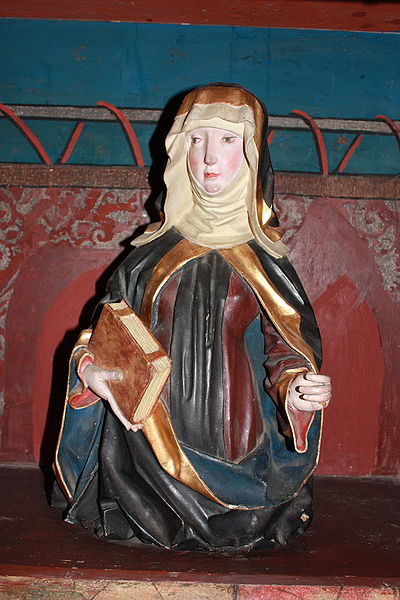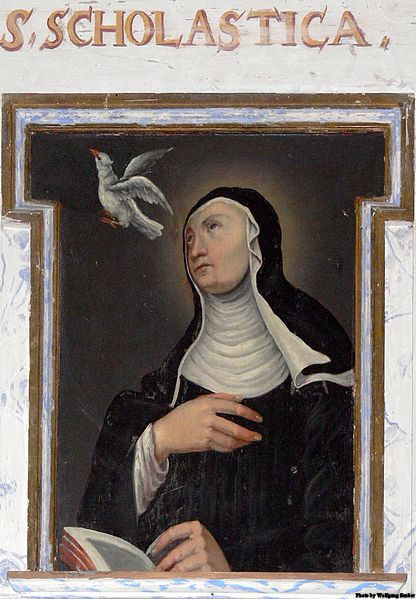St. Scholastica, Virgin
(c. 480 – 10 February 547)
This saint was sister to the great St. Benedict. She consecrated herself to God from her earliest youth, as St. Gregory testifies. Where her first monastery was situated is not mentioned; but after her brother removed to Mount Cassino, she choose her retreat at Plombariola, in that neighbourhood, where she founded and governed a nunnery about five miles distant to the south from St. Benedict’s monastery. (1)
St. Bertharius, who was abbot of Cassino three hundred years after, says, that she instructed in virtue several of her own sex. And whereas St. Gregory informs us, that St. Benedict governed nuns as well as monks, his sister must have been their abbess under his rule and direction.
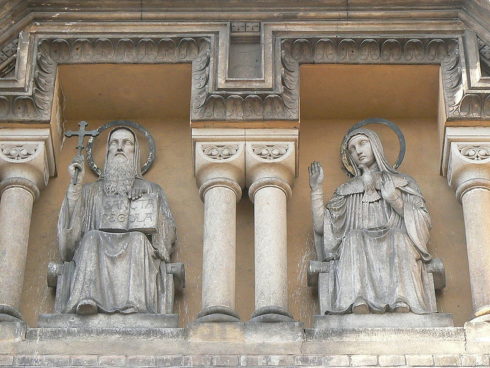
Statues of St. Benedict and his twin sister, St. Scholastica, above the entrance of the Church of the Annunciation, also called “St. Gabriel Church”, in Holečkova Street in Prague-Smíchov, Czechia.
She visited her holy brother once a year, and as she was not allowed to enter his monastery, he went out with some of his monks to meet her at a house at some small distance. They spent these visits in the praises of God, and in conferring together on spiritual matters. St. Gregory relates a remarkable circumstance of the last of these visits. Scholastica having passed the day as usual in singing psalms, and pious discourses, they sat down in the evening to take their refection. After it was over, Scholastica, perhaps foreknowing it would be their last interview in this world, or at least desirous of some further spiritual improvement, was very urgent with her brother to delay his return till the next day, that they might entertain themselves till morning upon the happiness of the other life.
St. Benedict, unwilling to transgress his rule, told her he could not pass a night out of his monastery: so desired her not to insist upon such a breach of monastic discipline. Scholastica finding him resolved on going home, laying her hands joined upon the table and her head upon them, with many tears begged of Almighty God to interpose in her behalf. Her prayer was scarcely ended, when there happened such a storm of rain, thunder, and lightning, that neither St. Benedict nor any of his companions could set a foot out of doors. He complained to his sister, saying: “God forgive you, sister; what have you done?” She answered: “I asked you a favour, and you refused it me: I asked it of Almighty God, and he has granted it me.” St. Benedict was therefore obliged to comply with her request, and they spent the night in conferences on pious subjects, chiefly on the felicity of the blessed, to which both most ardently aspired, and which she was shortly to enjoy. The next morning they parted, and three days after St. Scholastica died in her solitude.
St. Benedict was then alone in contemplation on Mount Cassino, and lifting up his eyes to heaven, he saw the soul of his sister ascending thither in the shape of a dove. Filled with joy at her happy passage, he gave thanks for it to God, and declared her death to his brethren; some of whom he sent to bring her corpse to his monastery, where he caused it to be laid in the tomb which he had prepared for himself.
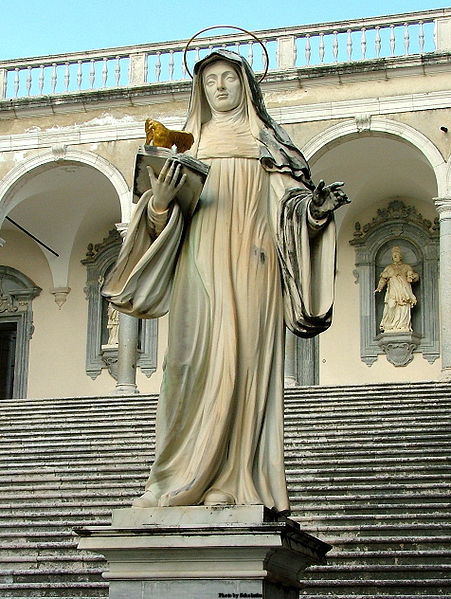
Her relics are said to have been translated into France, together with those of St. Benedict, in the seventh century, according to the relation given by the monk Adrevald. (2) They are said to have been deposited at Mans, and kept in the collegiate church of St. Peter in that city, in a rich silver shrine. (3)
In 1562 this shrine was preserved from being plundered by the Hugonots, as is related by Chatelain. Her principal festival at Mans is kept a holyday on the 11th of July, the day of the translation of her relics. She was honoured in some places with an office of three lessons, in the time of St. Louis, as appears from a calendar of Longchamp, wrote in his reign.
___________________________
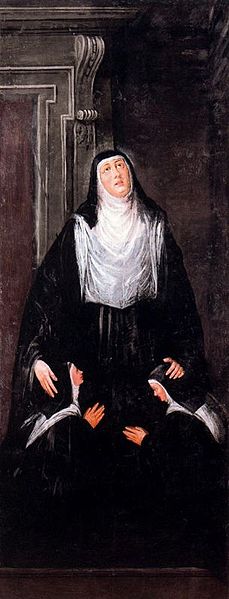
Note 1. This nunnery underwent the same fate with the abbey of Mount Cassino, both being burned to the ground by the Lombards. When Rachim, king of that nation, having been converted to the Catholic faith by the exhortations of Pope Zachary, re-established that abbey, and taking the monastic habit, ended his life there, his queen Tasia and his daughter Ratruda rebuilt and richly endowed the nunnery of Plombariola, in which they lived with great regularity to their deaths, as is related by Leo of Ostia in his Chronicle of Mount Cassino, ad an. 750. It has been since destroyed, so that at present the land is only a farm belonging to the monastery of Mount Cassino. See Dom Mege, Vie de St. Benoit, p. 412. Chatelain, Notes, p. 605. Muratori Antichita, etc. t. 3. p. 400. Diss. 66. del Monasteri delle Monache.
 Note 2. See Paul the deacon, Hist. Longob. and Dom Mege, Vie de St. Benoit. p. 48.
Note 2. See Paul the deacon, Hist. Longob. and Dom Mege, Vie de St. Benoit. p. 48.
Note 3. That the relics of St. Benedict were privately carried off from Mount Cassino, in 660, soon after the monastery was destroyed, and brought to Fleury on the Loire by Aigiulph the monk, and those of St. Scholastica by certain persons of Mans to that city, is maintained by Mabillon, Menard, and Bosche. But that the relics of both these saints still remain at Mount Cassino, is strenuously affirmed by Loretus Angelus de Nuce, and Marchiarelli, the late learned monk of the Order of Camaldoli; and this assertion Benedict XIV. looks upon as certain. (de Canoniz. l. 4. part. 2. c. 24. t. 4. p. 245.) For Pope Zachary in his bull assures us, that he devoutly honoured the relics of SS. Benedict and Scholastica at Mount Cassino, in 746. Leo Ostiensis and Peter the deacon visited them and found them untouched in 1071, as Alexander II. affirms in the bull he published when he consecrated the new church there. By careful visitations made by authority, in 1486 and 1545, the same is proved. Yet Angelus de Nuce allows some portions of both saints to be at Mans and Fleury, on the Loire. Against the supposed translation of the whole shrines of St. Benedict and St. Scholastica into France, see Muratori, Antichita, etc. dissert. 58. t. 3. p. 244.
From St. Gregory the Great, Dial. l. 2. c. 33. and 34.
Cfr. The Lives of the Saints, by Rev. Alban Butler, 1866. Volume II: February. p. 391-392.
